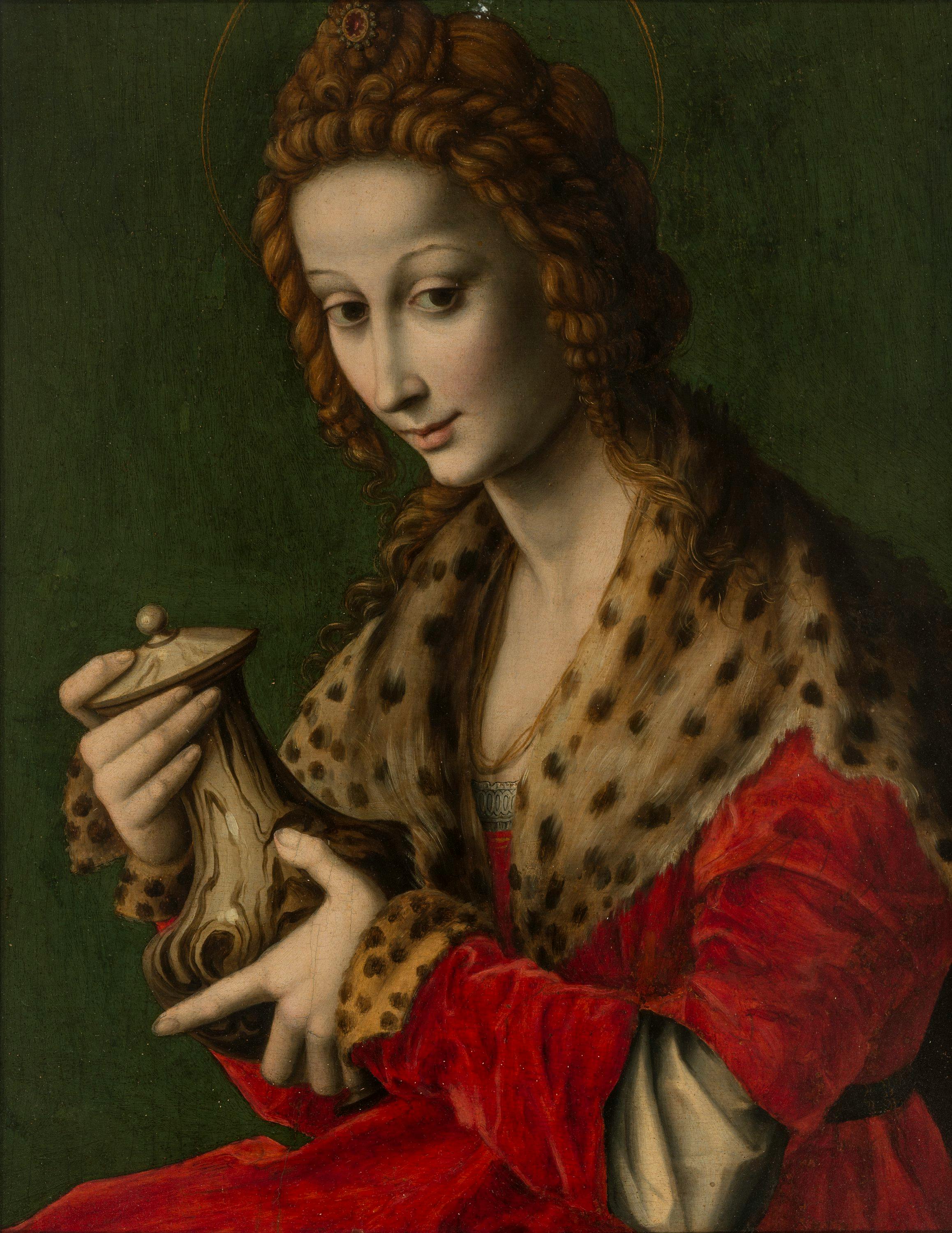Saint Mary Magdalene
Francesco d'Ubertino di Bartolomeo Verdi known as Bachiacca (Florence 1494 – 1557)
Magdalene is presented half-length and three-quarter-length, her gaze turned towards the viewer as she displays an onyx vase, an attribute often associated with her with reference to the Gospel passage (Luke 7:38) where the woman, after washing Jesus' feet with her tears, anoints them with perfumed oil. The red damask robe, contrasting with the acid green of the background, is cut at the elbow to reveal the white camisole, while the collar and sleeves are trimmed in lynx skin. The gold chain and the jewel pinned on the head complete the saint's elegant outfit, presented in the style typical of private portraiture of the early sixteenth century (a half-length cut that includes the hands, close-up perspective, fashionable clothing). This choice has led some scholars to believe that the effigy of a noblewoman, as yet unidentified, is concealed beneath Magdalene's guise. The fact that the painter orchestrated the image by playing on the ambiguity between the sacred and the profane is also evoked by the expression of subtle complicity in the gaze and in the barely noticeable smile, which clearly hints at the long shadow cast in the middle of the century from the portraits of Leonardo da Vinci, in whose name, by the way, this painting was listed in seventeenth-century Medici inventories. Other stylistic sources are buried in this deceptive image, in which Bachiacca, one of the most eccentric painters of the early sixteenth century, leaves behind his initial Perugian experiences to deepen his dialogue with Flemish painting and measure up in his own way to some of Michelangelo's inventions, in particular with the graphic series of "divine heads", i.e. ideal faces framed by very elaborate hairstyles (in turn taken from the fashion of ancient late fifteenth-century marble heroines) which inspired contemporary painters with a vast range of variations.
L.Aquino, scheda in I dipinti della Galleria Palatina e degli Appartamenti Reali, Le scuole dell’Italia Centrale 1450- 1530, Firenze 2014, scheda 22 pp.97-100 (con bibliografia precedente).
